Naval Fliers Commemorative Badge, by J. Preissler
CATEGORY: Version
SKU: 03.GEM.0108.101.03.000
Estimated market value:
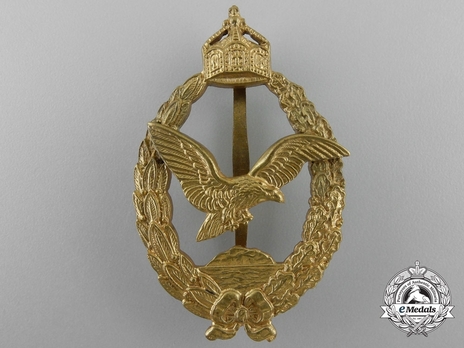
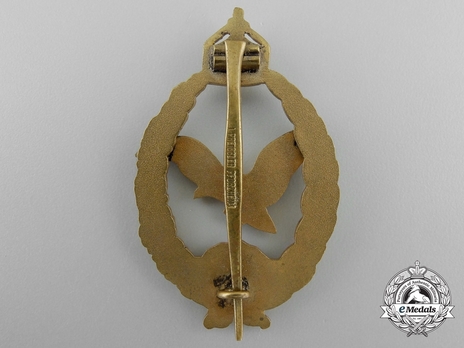
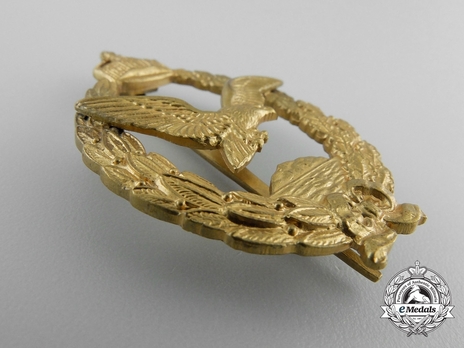
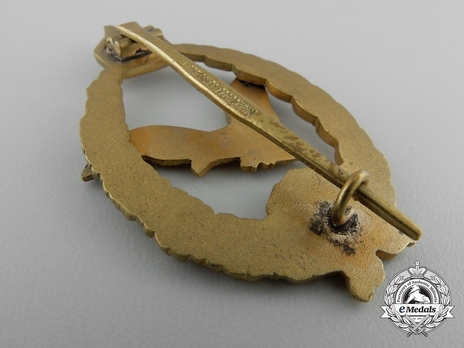
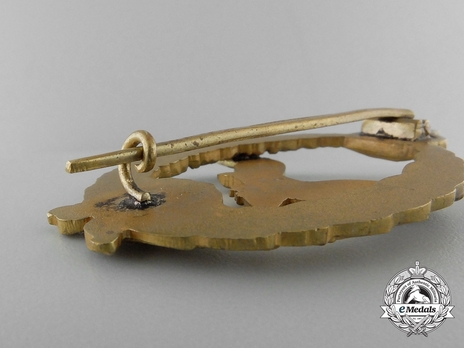
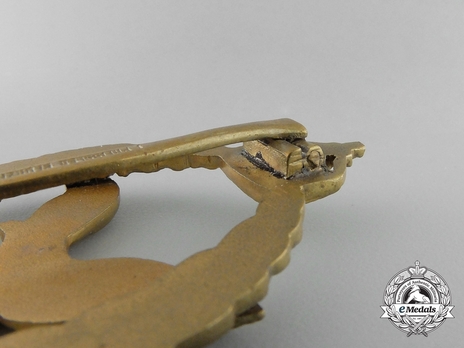
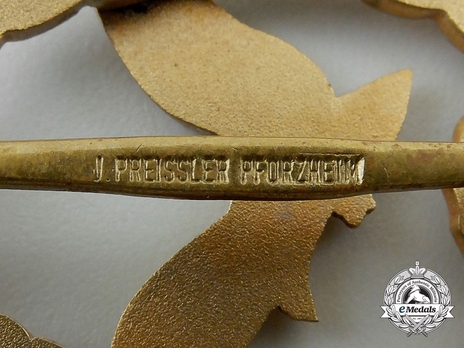
Estimated market value:
Badge in die stamped gilded brass, 34.65mm x 55.12mm, weighs 14.5 grams, marked on a pin “J.Preissler Pforzheim,”, slightly worn, in extremely fine condition; an excellent example. (Illustrated on page 516, Carsten Baldes "Aircrew Badges and Honor Prizes of the Flying Troops").
An air force branch under control of the German Navy was formed by decree of Emperor Wilhelm II on June 1, 1913. Its tasks were mainly reconnaissance-related and confined to the North Sea and Baltic areas. Some naval air force support was granted to the Ottoman allies, namely in the Black Sea area, including the Dardanelles. This does not mean, however, that they weren’t involved in combat with enemy planes and ships. About half of all naval airplanes were destroyed or damaged beyond repair during the war.
Naval air force personnel numbers have been given at just over 16,000, with just over 2,000 of them trained pilots and observers.
The Naval Fliers Commemorative Badge was approved by Emperor Wilhelm II and instituted on October 26, 1916.
It was worn in the centre of the left breast. The badge was awarded to naval pilots and observers who served in their respective capacities for a minimum of three consecutive years. This could be waived if an individual was forced into early retirement by an injury sustained during wartime service.
Just like the regular Pilot Badge of the air force, the Naval Fliers Commemorative Badge features a wreath made from laurel on the left and oak leaves on the right, with a bow at the bottom and an Imperial crown at the top. The difference is in the centre, which features an eagle in flight over the cliffs of the island of Helgoland, surrounded by the sea. In contrast to all other Imperial fliers badges, this one is cut-out and, above the island, features no background.
The eagle appears in two variants, one with folded wings, the other with outstretched wings. It has been speculated that one variant was awarded to observers and the other one to pilots, but no confirmation on this has ever been found. It appears more likely that the difference is simply due to artistic freedom and preference.
Badges measure approximately 33mm in width and 54mm in height. They are smaller than all other Imperial fliers badges and compare in size to the so-called Prinzen size badges. They generally weigh between 10 and 15g.
Contrary to all other Imperial fliers badges, due to being introduced at the end of 1916, it appears that the Naval Fliers Commemorative Badge was exclusively made of gilded brass and never of silver.
Due to the low numbers of naval fliers, this badge is only very rarely encountered today.
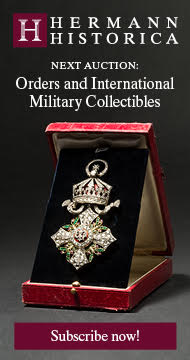
Comments
Sign in to comment and reply.

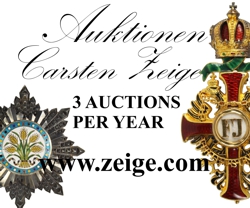
Scroll Top